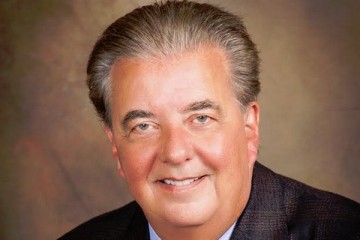 by Dr. Nick Anas, pediatrician-in-chief and director, pediatric intensive care unit
by Dr. Nick Anas, pediatrician-in-chief and director, pediatric intensive care unit
Physicians want to make a difference, which is why most have chosen health care as their life’s work. For those of us who have aligned with a major children’s hospital, it is very clear that strategic planning and achieving shared vision require the medical staff and the hospital administration to work collaboratively and communicate openly. This is sometimes easier said than done.
The first challenge is to understand that physician training and hospital administration training are different disciplines with different approaches to planning and to problem solving. What is clear is that in most circumstances both the physician side and the C-Suite side need the experience and point of view of the other in order to make sound decisions.
To this end, the physician interested in participating in the C-Suite decision-making process must be able to understand the language of the administration and must be willing to regularly attend the number of meetings usually necessary for final determinations to be made. On the flip-side, the hospital administrators need to understand that most physicians are very result- oriented and expect decisions to be immediate and decisive. So, the balance is that the physician must commit time and patience to the administrative process and the administration must understand the value of early “wins” to demonstrate to their medical leadership that their time and opinions matter.
For physicians, there are plenty of opportunities to work alongside our executives engaging in projects to which they feel they can contribute important information and experience. Physicians who truly want to drive change in the hospital setting must assume leadership roles, commit to committee attendance, and devote time to study and reading in areas related to change and transformation. I encourage the physicians to ask their executive counterparts to better understand what goes on in the hospital 24 hours a day, 7 days a week. Many physicians believe that the C-Suite leaders do not really know what happens in the clinics, in the operating rooms, in the intensive care units. I encourage the physicians to bring scrubs to the executives to wear as they bring them to their work areas. Many times, I have said to my C-Suite partners that they deserve to enjoy the results of their hard work which are the medical milestones that occur every day at CHOC.
The good news is that physician-hospital alignment has been a major goal of the CHOC 2020 strategic plan. The C-Suite team is actively encouraging physician involvement at the administrative level and has been very innovative in its thinking. The establishment of the Clinical Leadership Council (CLC) is one very successful venue where the physicians and CHOC executive leaders have collaborated in efforts for long- term vision and program planning. There are numerous other examples.
The message to my medical colleagues is to take the plunge because your input and opinions are valued and needed. And the message to my C-Suite colleagues is to leave your office and walk into the clinics or hospital and have your meetings and make your decisions where your physician colleagues have staked and dedicated their professional careers. In the end, the children are the winners.












